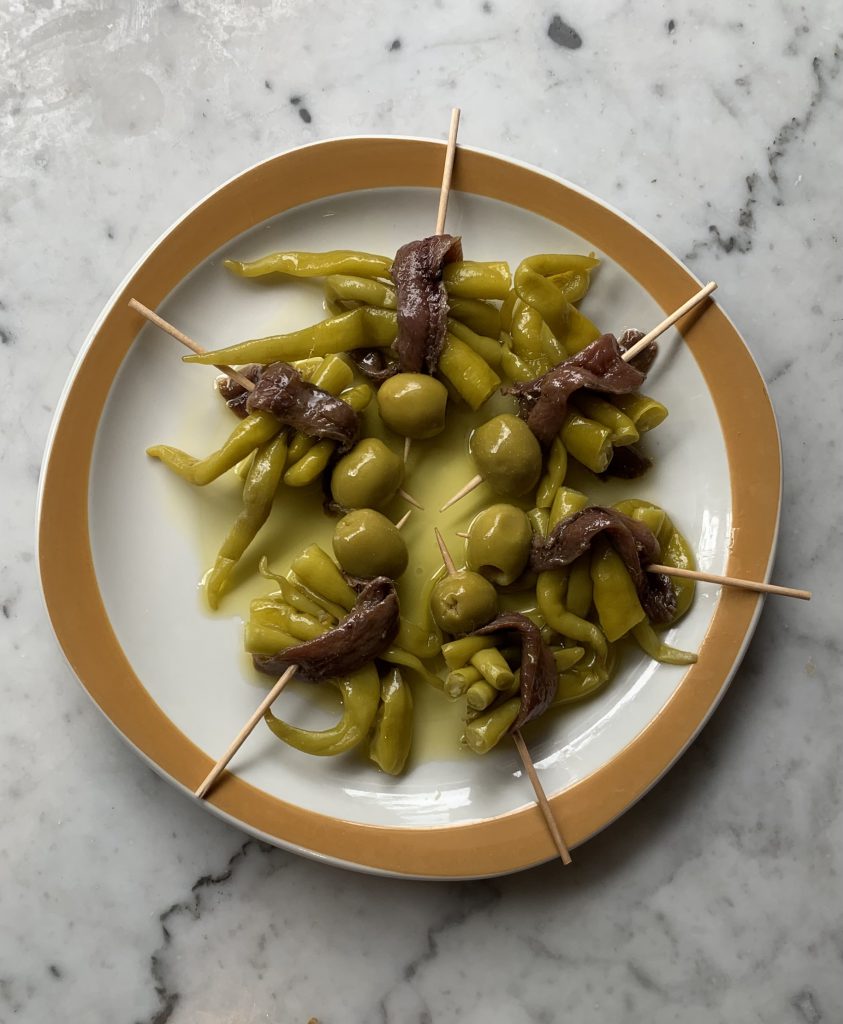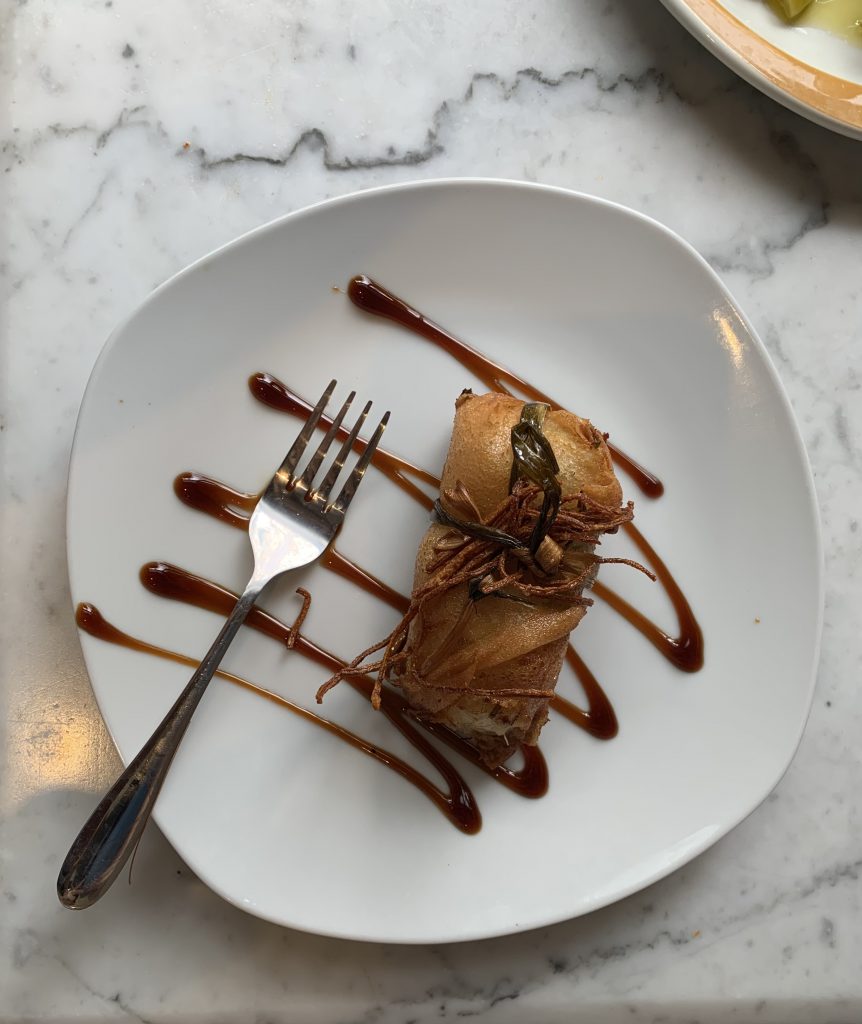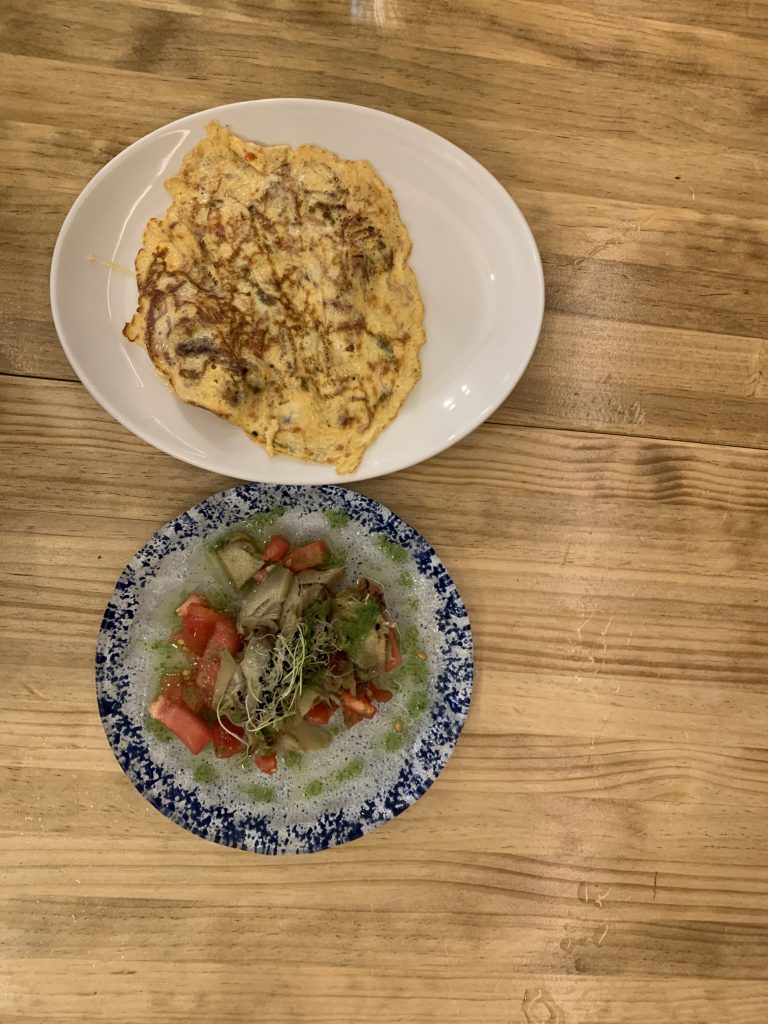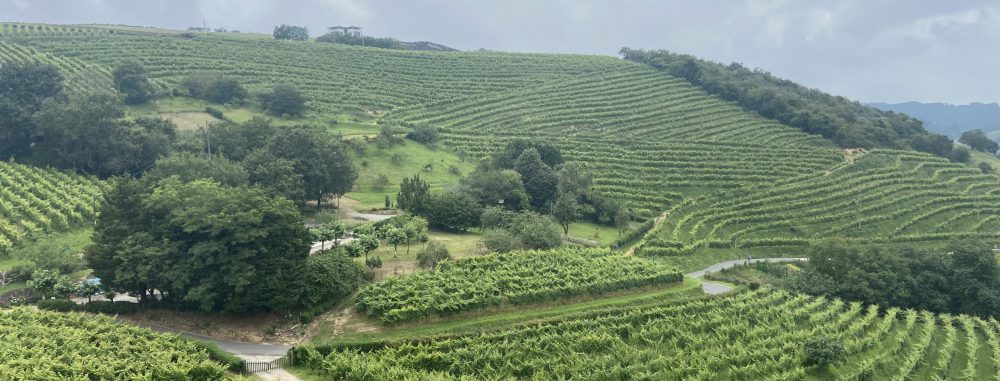Prior to arriving in San Sebastián, I had heard all about the food culture here and its importance.
I had read Basque Country by Marti Buckley and thought I knew everything I needed to know. I knew the foods that I was looking forward to eating, and that “pintxos” are small bites common in bars of the Basque Country. They are also typically served on skewers. After the first day of classes, I went on a pintxo-tasting tour of the Parte Vieja (Old Part) of San Sebastian and quickly realized that what I had read about was worlds away from experiencing the food culture of the Basque Country in real life.
To start our day, we rode our bicycles to class. This was the first time that I had ridden a bike in
many years, so I was a bit apprehensive, especially on the narrower bike lanes. Despite my worries, I biked alongside my newfound friends to Lacunza, our Spanish language school. After class, I had initially intended to go off on my own to reflect on my first days in San Sebastián, but due to a last-minute change in plans, my friend Suhani and I were asked to switch to today’s pintxo tour.
Last-minute changes typically make me anxious, and this was no exception. I was worried about
having to use the GPS while on my bike, and about being rushed to arrive in La Parte Vieja. We
overcame our concerns though, and Suhani and I carried on out of our comfort zones. We arrived at the first spot, Haizea Bar, which is an older Basque bar. We enjoyed five dishes from here; the first was Guilda, which is a skewer with green olive, anchovy, and green chili peppers, drizzled with olive oil. We also ate bacalao, which is cod fried in a croquette form. After these two dishes, we each had a skewer of fried shrimp, a skewer with grilled shrimp and scallops, and some jamón. The bacalao was my favorite dish from here, with a close second being the jamón, which left a buttery feeling in my mouth.


We then walked around La Parte Vieja toward our next destination, Paco Bueno. We stopped in
to quickly try their beer-battered shrimp, and I learned a fun fact about this dish: the owners of Paco Bueno refused to give Marti Buckley the recipe for it. The shrimp was amazing, and it had just been cooked when we ordered, so it was hot and fresh. The light, airy beer batter elevated the shrimp, somuch so that it did not need any sauce. In our discussions, we spoke about how sauces are not customary in the Basque country, as they hide the taste of the food. Despite this being so different from American cuisine, I hardly noticed the lack of sauces in each dish.
Following this, we went to a more modern restaurant, Itxaropena, that had recently changed hands to a Latin American chef. Although he is not Basque, the restaurant has been quite successful in the brief time he has been running it. We spent most of our time on the tour here, eating both savory and sweet dishes. The first dishes to come out were fried asparagus, Basque Ropa Viejas—which, unlike Cuban Ropa Viejas, is a runny omelet—and the restaurant’s prize-winning artichoke salad. I noticed that these
dishes were light and refreshing, while our second batch of dishes to arrive were a bit heavier. This consisted of fried txistorra (a Basque sausage), a steak pintxo, and pan de hongos, or mushroom bread. Toward this point I could feel myself begin to slow down after all the dishes, but I was still really enjoying the food. Just as I began to feel full, the sweet pintxo was served. We ate torrija, a brioche soaked in cream and served with raspberry gelato. The first bite I took of this pintxo was extraordinary. The brioche was warm and buttery, and when combined with the cool and refreshing gelato it surpassed
all my expectations for dessert. I am looking forward to going back to Itxaropena in these coming weeks to get a full torrija to myself.


Finally, as our tour was coming to an end, we stopped by La Viña for the famous Basque
cheesecake and then in Zaporejai to pick up some slices of Pata Negra jamón, which is known to be one of the highest quality meats here. As kitchens and dining rooms were closing, we opted to take these bites to go. Our group of six ended up eating the jamón and cheesecake along the Urumea River outside of La Parte Vieja as it drizzled. We reflected on our day while we ate and watched the tides crash into
the breakers.
I cannot imagine a better ending to my pintxo tasting tour. As we sat in the rain, I said to the
group how the weather we were having was perfect for eating the warm cheesecake. If it had been any warmer or any rainier, I would have preferred to eat somewhere else, but the mixture of the light rain and breeze was picture-perfect. I am grateful to have taken advantage of the opportunity and joined in on this pintxo tasting tour, even though it was a last-minute decision. This experience has inspired me to
further step out of my comfort zone and challenge myself, which is what this study abroad opportunity is all about for me. I am so excited for what is to come in these next two weeks and the surprises it will bring.

